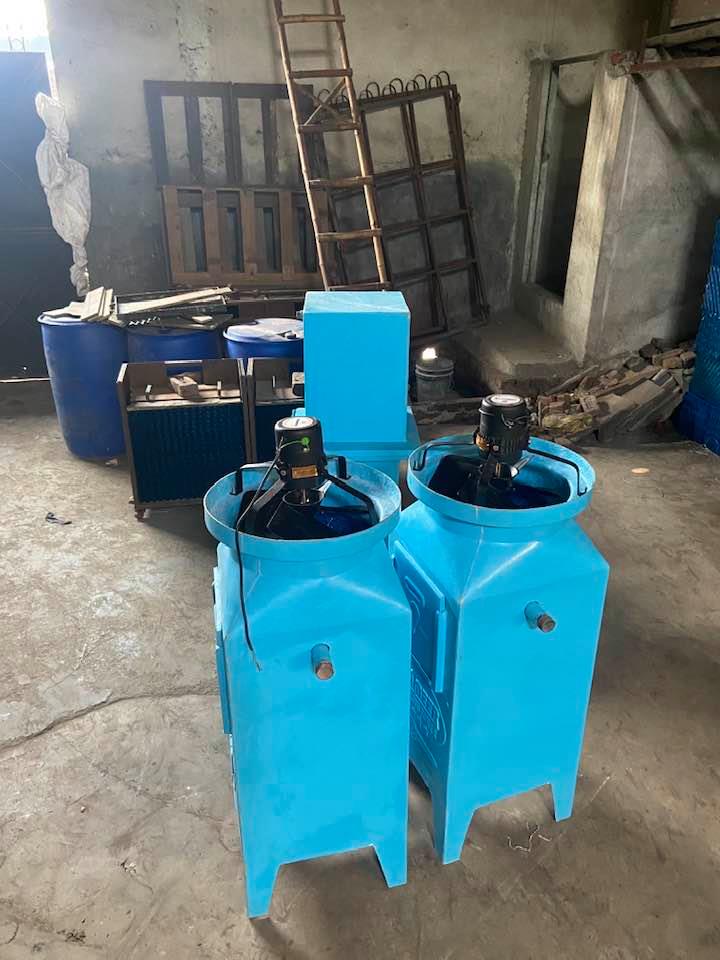Concrete Cooling Towers: Overview, Pros & Cons, and Applications
Concrete cooling towers are heavy-duty structures commonly used in large industrial and power generation applications where durability and long-term performance are critical. They offer exceptional strength and longevity but come with higher initial costs and construction complexity.
Advantages of Concrete Cooling Towers
1. Extreme Durability & Long Lifespan
- Lifespan: 30–50+ years (outlasting steel, FRP, and wood).
- Weather Resistance: Withstands hurricanes, earthquakes, and extreme temperatures.
- Fireproof: Unlike wood or FRP, concrete is non-combustible.
2. High Structural Strength
- Supports massive water volumes (common in power plants, refineries).
- Can be built to very large sizes (e.g., hyperbolic towers in nuclear plants).
3. Corrosion & Chemical Resistance
- Better than steel in corrosive environments (e.g., chemical plants, coastal areas).
- Special coatings (epoxy, polyurethane) can enhance resistance.
4. Low Maintenance Over Time
- No rust, rot, or UV degradation (unlike steel, wood, or FRP).
- Minimal structural repairs needed if properly designed.
5. Customizable Designs
- Hyperbolic (Natural Draft): Used in power plants for passive cooling.
- Mechanical Draft (Forced/Induced): For industrial process cooling.
- Modular or Field-Erected: Can be tailored to site requirements.
Disadvantages of Concrete Cooling Towers
1. High Initial Cost & Long Construction Time
- Expensive materials and labour-intensive construction.
- Requires heavy foundations, cranes, and skilled workers.
2. Heavy & Permanent Structure
- Difficult to modify or relocate once built.
- Not suitable for temporary installations.
3. Potential for Cracking & Leaks
- Poor construction or seismic activity can cause cracks.
- Requires waterproofing membranes to prevent seepage.
4. Higher Energy Use in Some Cases
- Natural draft towers rely on buoyancy (no fans), but mechanical draft concrete towers may be less efficient than modern FRP designs.
Common Applications
- Power Plants (coal, nuclear, gas – especially hyperbolic towers).
- Oil Refineries & Petrochemical Plants (corrosive environments)
- Large Industrial Facilities (steel mills, paper mills)
- District Cooling Systems (long-term infrastructure projects)
Concrete vs. Other Cooling Tower Materials
| Feature | Concrete | FRP | Steel | Wood |
| Lifespan | 30–50+ yrs | 25–30 yrs | 15–25 yrs | 20–30 yrs |
| Corrosion Resistance | ★★★★☆ (with coatings) | ★★★★★ | ★★☆☆ (rust-prone) | ★★★☆☆ |
| Weight | Very Heavy | Light | Heavy | Moderate |
| Construction Time | Long (months) | Short (weeks) | Medium | Medium |
| Maintenance | Low (long-term) | Low | High (anti-rust) | High (rot/insects) |
| Cost | Very High | Medium-High | Medium | Low-Medium |
Types of Concrete Cooling Towers
- Hyperbolic (Natural Draft)
- Iconic “hourglass” shape (e.g., nuclear power plants).
- Uses chimney effect for passive cooling (no fans).
- Mechanical Draft (Forced/Induced)
- Uses fans to enhance airflow (common in industry).
- Can be crossflow or counterflow designs.
- Field-Erected vs. Precast Modular
- Field-erected: Built on-site (custom sizes).
- Precast: Faster assembly but less customization.
Key Maintenance Considerations
- Inspect for cracks (repair with epoxy injections if needed).
- Check waterproofing coatings (prevent leaks).
- Monitor fill media (replace if clogged or degraded).
- Clean basins to prevent sediment build-up.
Future Trends in Concrete Cooling Towers
- Hybrid designs (concrete structure + FRP internals for better efficiency).
- Advanced coatings (self-healing concrete, hydrophobic sealants).
Smart sensors (monitor structural health, water quality).
